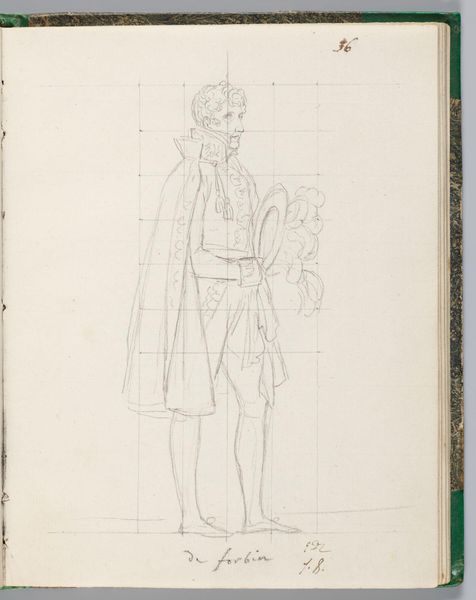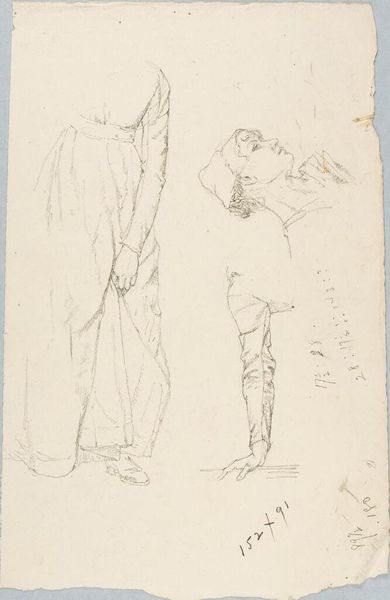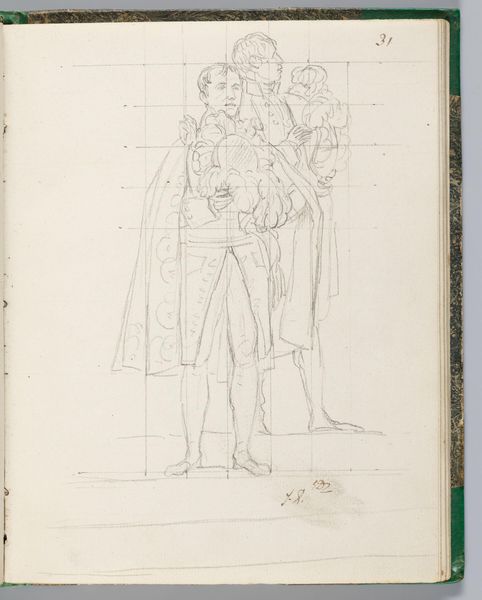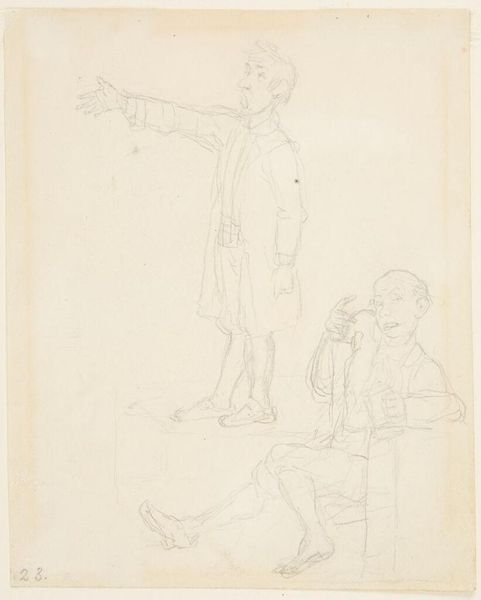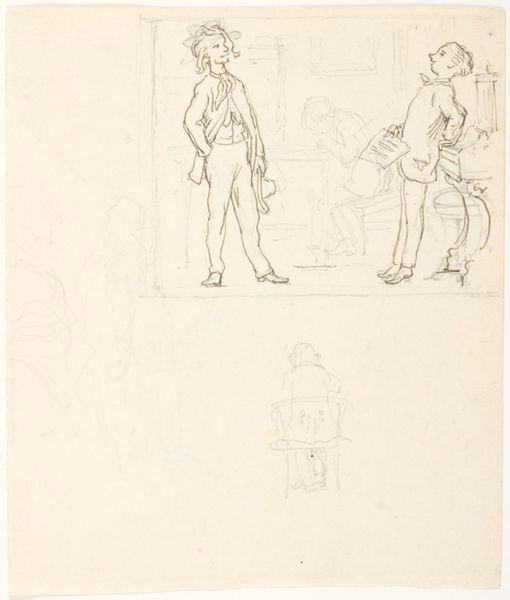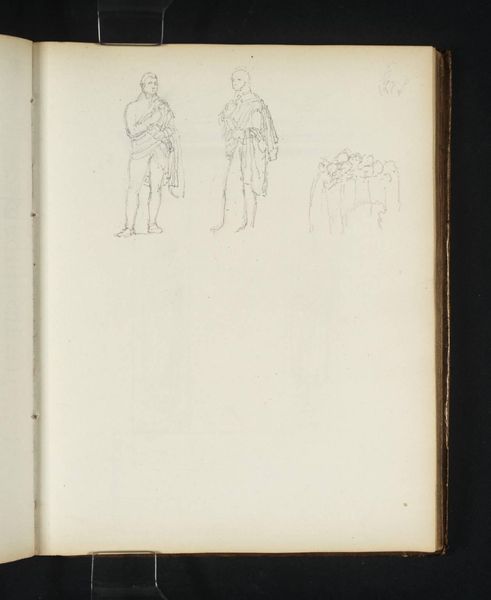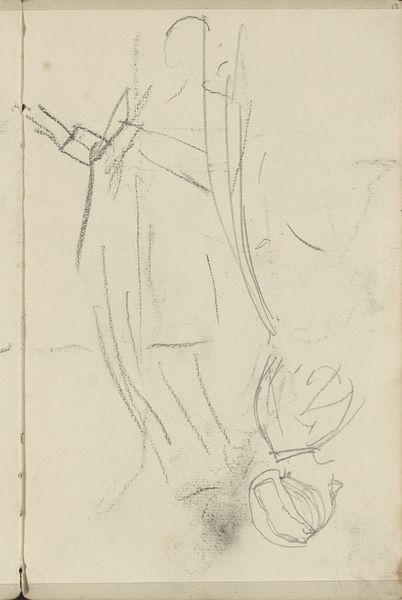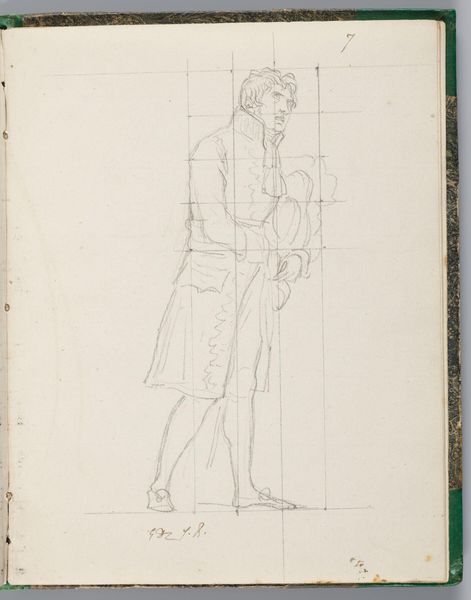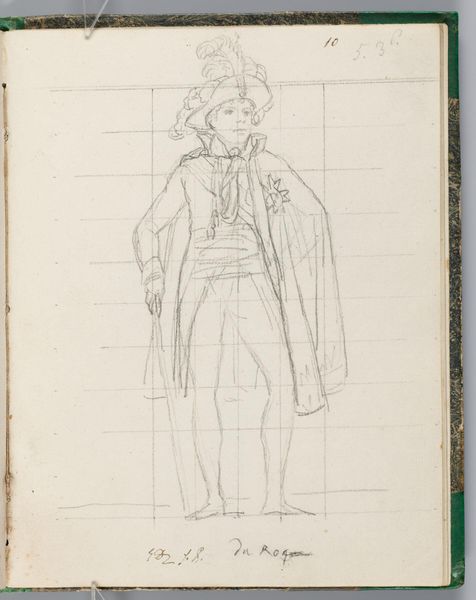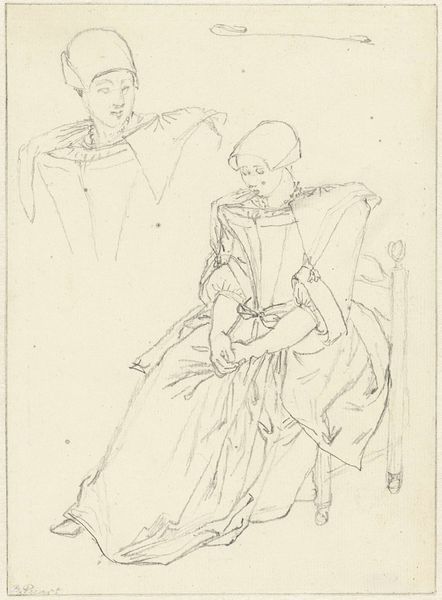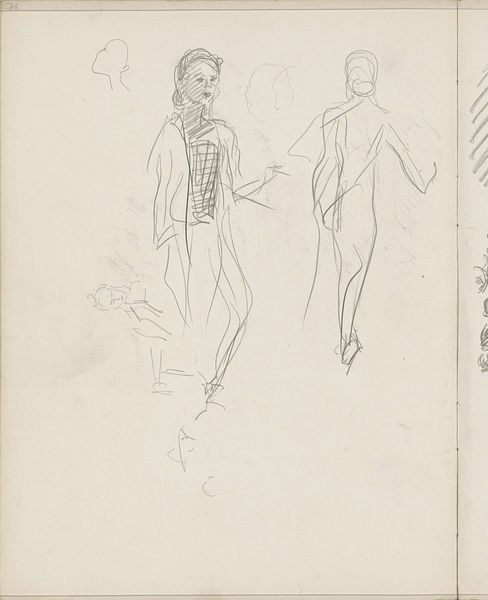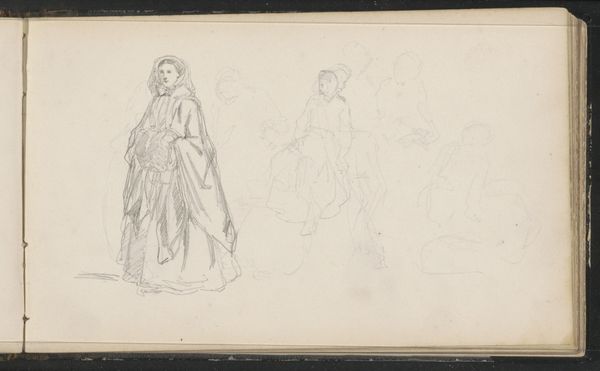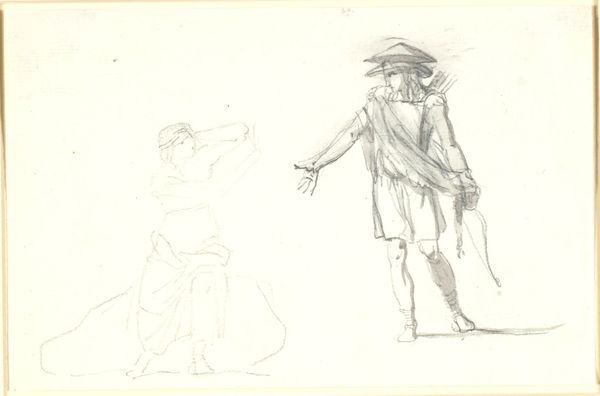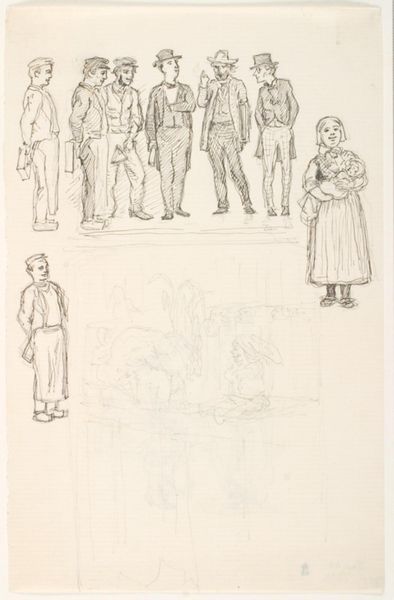
drawing, pencil
#
drawing
#
imaginative character sketch
#
pen illustration
#
figuration
#
personal sketchbook
#
idea generation sketch
#
character sketch
#
ink drawing experimentation
#
pen-ink sketch
#
pencil
#
sketchbook drawing
#
genre-painting
#
storyboard and sketchbook work
#
sketchbook art
#
realism
Copyright: Rijks Museum: Open Domain
Editor: This is "Young Man with Pipe and a Woman" by Hendrik Abraham Klinkhamer, made sometime between 1820 and 1872. It's a pencil and pen drawing, and it feels very much like a candid snapshot, almost like street photography before cameras were readily available. What strikes you most about this piece? Curator: What I find compelling is its quiet resistance to the dominant narratives of the time. This isn't a grand history painting or a romanticized landscape. Instead, it focuses on everyday people, perhaps even from a marginalized community, engaging in ordinary activities. Notice how their clothing, though simply sketched, hints at a class and cultural identity. What do you think their story might be, considering the societal norms of that era? Editor: I guess I hadn’t really thought about that, but their posture does seem sort of informal. Their story isn't being imposed on them; rather, Klinkhamer captures an inherent, quotidian quality. Curator: Exactly. It begs the question of representation: Who gets to be seen, and how? By choosing these subjects, Klinkhamer subtly challenges the art world’s status quo. What if this drawing were by a woman artist, observing and depicting her own community? How would that change our reading? Editor: That would add another layer entirely. The act of a woman observing and documenting her own experiences would amplify the drawing's activist voice even more. It’s a piece that encourages a wider perspective and an alternative discourse. Curator: Precisely. And that is why this drawing still resonates. It's a testament to art's power to spotlight marginalized experiences and invite reflection on who we choose to elevate, or ignore, throughout history. Editor: I’m beginning to see that the simple scene becomes a poignant reminder that representation matters and makes me think more about how historical context can provide different insight. Curator: Indeed. It opens up conversations that art history sometimes silences.
Comments
No comments
Be the first to comment and join the conversation on the ultimate creative platform.
